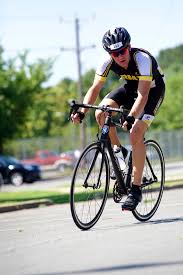Why is it difficult to balance a bicycle when not moving?« Back to Questions List
|
A bicycle along with a rider becomes a system capable of dynamic equilibrium. Equilibrium is a condition in which all competing forces or influences acting upon a system or object are balanced. When a rider rides a bicycle, he automatically corrects the tilt. This is similar to what we do while walking, running or standing. When standing, our support points are the two places where our legs are in contact with the ground. We ensure that the centre of gravity is in the vertical plane through the line joining the two support points. When pushed to the left by someone, the left leg shoots up to the left to ensure that the centre of gravity is in the middle. Similar movement occurs when pushed to right. Our subconscious mind automatically controls such movements making our running, walking or standing comfortable.
The corrections required are more when moving slowly and less when moving fast. When moving fast, a slight tilt will make required adjustments. It becomes tougher as the speed decreases. This why more experience is required to ride or balance a bicycle at slow speed.
How do the high speed maglev trains work?Why don’t we feel the rotation of earth? |

